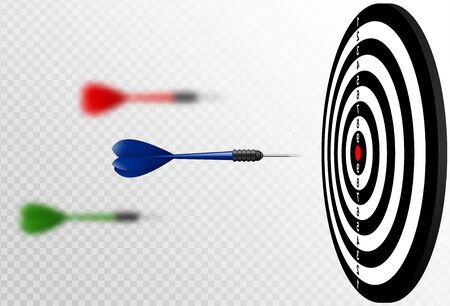1. Understanding the Importance of Tournament Data
If you want to win big in competitive sports or gaming, you need more than just talent and hard work—you need a game plan built on solid data. That’s where analyzing tournament data comes in. When you break down past performances, you spot trends, learn from mistakes, and find ways to improve for the next round. Let’s dive into why tournament data is such a powerful tool.
Why Tournament Data Matters
Tournament data isn’t just a list of scores or rankings. It includes everything from player stats and team strategies to weather conditions and opponent behaviors. By digging into this info, athletes and gamers can get an edge over their competition. Here are some key reasons why it matters:
| Reason | How It Helps |
|---|---|
| Spotting Patterns | See what works (and what doesn’t) across multiple games or matches. |
| Identifying Strengths & Weaknesses | Figure out your best moves and areas that need work. |
| Scouting the Competition | Learn about opponents’ habits and tactics before facing them again. |
| Adapting Strategies | Fine-tune your approach based on what the numbers reveal. |
| Boosting Confidence | Back up decisions with facts instead of gut feelings alone. |
The Role of Data in Future Success
Think of tournament data like a trail map in the wilderness—you wouldn’t hike without knowing the lay of the land. In sports and gaming, data helps you chart the best path forward. Coaches, players, and teams use these insights to create smarter training routines, develop counter-strategies for tough opponents, and even predict how future tournaments might unfold.
Real-World Example: Esports Teams
In professional esports leagues, top teams record every match. They review video footage, analyze heat maps showing where action happened on the map, and break down reaction times. This level of detail turns raw numbers into winning strategies—making each tournament performance a stepping stone to greater success.
2. Collecting and Organizing Key Performance Metrics
Gathering the Right Data from Past Tournaments
If you want to turn past performance into future wins, the first step is grabbing the right data. Start with the basics: scores, win/loss records, and player stats like assists, rebounds, or goals depending on your sport. Don’t forget about context—who your team played against, weather conditions, or even home vs away games can all matter.
Common Tournament Data Points
| Metric | Description | Why It Matters |
|---|---|---|
| Score | Total points/goals/runs per game | Measures overall performance |
| Opponent Strength | Rank or win record of opposing team | Puts results in context |
| Location | Home, away, or neutral field/court | Identifies performance trends based on venue |
| Player Stats | Individual contributions (e.g., steals, saves) | Highlights strengths and weaknesses by player |
| Date & Time | When the game took place | Reveals patterns related to time of day/season |
| Weather (if outdoors) | Temperature, rain, wind, etc. | Affects play style and outcomes in many sports |
Cleaning Up Your Data for Accuracy
No one likes messy data—it’s like going camping with a tangled fishing line. Before you jump into analysis, check for missing stats, duplicate entries, or obvious errors (like impossible scores). For digital data (spreadsheets or databases), use filter tools to spot gaps or weird numbers. If you’re working off old score sheets or PDFs, make sure everything is entered clearly and consistently.
Quick Tips for Cleaning Data:
- Remove duplicates: Double-check that every game only shows up once.
- Standardize formats: Make sure dates are all written the same way (MM/DD/YYYY works great in the U.S.). Use full names instead of nicknames for players.
- Fill in gaps: If you’re missing a stat but have video or other records, go back and fill it in for a complete picture.
- Check math: Totals should add up—if not, review individual entries for mistakes.
Structuring Your Data for Deep Analysis
The secret to spotting trends is structuring your data so it’s easy to sort and compare. Use spreadsheets like Google Sheets or Excel; set up columns for each metric and rows for each game or player. Group similar tournaments together if you’re looking at multiple seasons. Tag important details—like playoff games vs regular season—to allow quick filtering later.
A Simple Table Example:
| Date | Opponent | Location | Your Score | Their Score | MVP Player(s) |
|---|---|---|---|---|---|
| 03/12/2024 | Eagles High School | Away | 68 | 71 | Cameron Lee |
| 03/18/2024 | Lakeside Prep | Home | 75 | 64 | Sydney Torres/Brian Huntley |
This kind of setup lets you run quick filters—say, checking how your team performs at home versus away—or highlighting which players stand out under pressure.
The Bottom Line on Tournament Data Prep (So Far)
The more organized your data, the easier it’ll be to draw insights that give you an edge next time out. Treat tournament stats like survival gear: keep them clean, sorted, and ready to go when it’s time to plan your next move.

3. Spotting Winning Patterns and Common Pitfalls
If you want to turn past tournament data into future wins, it all starts with spotting trends and learning from both the highlights and hiccups of previous games. Let’s break down how you can recognize what works, avoid repeat mistakes, and use this info to shape your next strategy.
Breaking Down the Trends
Start by looking for patterns in win-loss records, point spreads, or player stats. Are there certain teams or players who always perform well under pressure? Does a particular playstyle lead to more victories? Here’s a simple way to lay it out:
| Trend | Description | Impact on Future Games |
|---|---|---|
| Strong Starts | Teams with high first-quarter scores tend to win more often. | Focus on early-game strategies. |
| Bench Depth | Winning teams use their bench more effectively. | Rotate players to stay fresh. |
| Turnover Rate | Frequent turnovers usually predict losses. | Prioritize ball control in practice. |
Winning Habits from Historical Data
Certain habits show up again and again among top performers. For example:
- Consistent Practice Routines: Teams that stick to regular practice schedules tend to improve faster.
- Quick Recovery After Mistakes: Players who bounce back after errors keep the momentum going.
- Tactical Timeouts: Smart use of timeouts stops losing streaks before they snowball.
Common Pitfalls to Avoid
The same old slip-ups trip up even experienced squads. Watch out for these frequent mistakes found in the data:
- Poor Communication: Most lost games show spikes in miscommunication among teammates.
- Lack of Adaptability: Teams that stick too long with a failing strategy usually get left behind.
- Inefficient Substitutions: Waiting too long to swap tired players results in late-game breakdowns.
Your Next Move: Turn Analysis Into Action
This isn’t just about numbers—it’s about using real, boots-on-the-ground knowledge to craft a smarter game plan. Dig into your team’s data, compare it to league-wide trends, and make adjustments where you see patterns—good or bad. By being honest about what’s working and what isn’t, you’ll be one step ahead for the next tournament battle.
4. Using Data to Refine Strategies and Tactics
Turning Tournament Insights into Action
Tournament data isn’t just about the numbers—it’s about learning from what happened so you can outsmart your competition next time. When you dig into the stats, game footage, and player performance from past tournaments, you get a clear picture of what works and what doesn’t. The real power comes from using these insights to update your playbooks, shape your practices, and make better calls when the pressure’s on.
Sharpening Your Playbook
Analyzing the data helps you spot patterns in your own team’s plays and your opponents’ strategies. Maybe you find that your team scores more often when running specific offensive sets, or that certain defensive tactics consistently break down against fast-paced teams. With this info, you can tweak your playbook to focus on high-percentage plays and shore up weak spots.
| What Data Shows | How to Adjust Playbook |
|---|---|
| High success rate with pick-and-roll offense | Add more variations of pick-and-roll plays |
| Struggle defending against three-point shooters | Include more perimeter defense drills |
| Strong fast breaks after turnovers | Emphasize transition offense in practice |
| Poor rebounding in second half of games | Focus on stamina and rebounding techniques late in practice sessions |
Optimizing Practice Regimens
The numbers don’t lie—if the data says your team misses free throws under pressure or loses steam late in the game, it’s time to address those issues head-on. Tailor practice sessions based on what tournament analysis reveals. Run pressure drills for free throws, simulate late-game scenarios, or work on conditioning if fatigue is a problem. Practicing with a purpose leads to noticeable improvement when it counts.
Example: Adjusting Practice Based on Data Analysis
- If turnovers spike during full-court press situations, dedicate extra time to ball-handling under pressure.
- If shooting percentages drop in the last quarter, add endurance shooting drills at the end of practice.
- If communication lapses lead to missed assignments, run scrimmages where players must call out every switch and screen.
Making Smarter In-Game Decisions
The heat of competition is no place for guesswork. Tournament data gives coaches and players a reliable foundation for quick decision-making. For example, if past analysis shows that certain lineups excel defensively against specific opponent types, you know exactly who to put on the floor when things get tight. Or if your shot chart shows a hot hand from a particular spot, design plays to get your shooter open there.
Quick Reference Table: In-Game Adjustments Based on Data
| Data Insight | In-Game Adjustment |
|---|---|
| Opponent struggles with zone defense | Switch to zone when they’re gaining momentum |
| Your center dominates inside vs small lineups | Feed the post more often when they go small-ball |
| Your top scorer is cold from outside but gets fouled often driving in | Create isolation plays for drives instead of jumpers |
| Your bench unit outscores opponents during early second quarter shifts | Give them extended minutes during that window for an energy boost |
By making these adjustments based on real tournament data, you’re not just hoping for better results—you’re building a system that turns past experience into future wins.
5. Real-World Examples: Success Stories from American Teams
How U.S. Teams Turned Data into Victories
Analyzing tournament data isn’t just a theory—it’s a proven game-changer across American sports and esports. Let’s break down some powerful examples where teams have transformed raw numbers into real wins.
NBA: The Golden State Warriors Revolution
The Warriors changed the NBA by using analytics to focus on three-point shots and ball movement. Coaches and analysts crunched data to spot shooting trends and ideal lineups, helping them win multiple championships.
| Aspect | Old Approach | Analytics-Driven Change |
|---|---|---|
| Shooting Focus | Mainly mid-range shots | Prioritize 3-pointers |
| Lineup Selection | Based on experience | Based on plus-minus stats |
| Result | Playoff team | Dynasty with 4 titles in 8 years |
NFL: The Philadelphia Eagles’ Super Bowl Run
The Eagles embraced advanced data to make gutsy play-calling decisions. Their famous “Philly Special” trick play in Super Bowl LII was backed by odds, not just gut feeling. Their coaching staff used analytics for fourth-down calls, player health tracking, and opponent analysis.
- Play Calling: Used predictive models to decide when to go for it on fourth down.
- Player Health: Monitored practice loads to reduce injuries.
- Opponent Analysis: Broke down tendencies to exploit weaknesses.
Esports: Team Liquid in League of Legends (LCS)
American esports teams are also riding the analytics wave. Team Liquid uses in-depth match data to adjust strategies, optimize drafts, and scout opponents before big tournaments.
| Strategy Area | Traditional Approach | Analytics Upgrade |
|---|---|---|
| Champion Picks | Comfort picks for players | Picks based on win rates vs. enemy comps |
| Tactics Review | Subjective VOD review only | Data-driven breakdowns of key plays and mistakes |
| Opponent Prep | Anecdotal scouting reports | Dossier of opponent tendencies from past games data |
NCAA Basketball: Villanova Wildcats’ Efficient Offense
The Villanova Wildcats used offensive efficiency stats to guide their style of play, leading them to multiple national championships. By focusing on shot selection and minimizing turnovers—tracked through detailed analytics—they maximized every possession.
- Shot Selection: Data-backed emphasis on high-value shots (3s and close-range)
- Pace Control: Adjusted tempo based on opponent weaknesses shown in past games’ data
- Turnover Minimization: Drills targeted at reducing costly mistakes identified through stat breakdowns
The Takeaway: Data Drives Wins Across the Board
No matter the sport or arena, American teams are proving that smart use of tournament analytics can tip the scales from contenders to champions. Whether it’s basketball, football, or esports, turning performance data into actionable strategy is a winning formula.
6. Tools and Resources for Next-Level Data Analysis
If you want to take your tournament prep up a notch, digging into past performance data is key—and so is using the right tools. In the U.S., there are plenty of software options, apps, and online services designed to help coaches, athletes, and teams break down stats and spot patterns before the next big game. Here’s a practical look at some of the most popular choices:
Top Software & Apps for Tournament Data Analysis
| Tool/App | Main Features | Best For |
|---|---|---|
| Hudl | Video analysis, stat tracking, highlight reels | Team sports (football, basketball, soccer) |
| StatCrew | Detailed stat entry, live reports, real-time analytics | Collegiate sports programs |
| Krossover | Game breakdowns, tagging plays, searchable video clips | High school and college coaches/players |
| Dartfish | Motion analysis, video tagging, performance review | Individual athletes (track & field, swimming) |
| Excel/Google Sheets | Custom stat tracking, charting trends over time | DIY analysis for any sport or competition type |
| Sports Reference Sites (like MaxPreps & Baseball-Reference) | Historical stats, player comparisons, team records | Fans, analysts, coaches wanting quick info pulls |
The Practical Side: How These Tools Help You Prep Smarter
- Hudl and Krossover: Great for breaking down game film. You can tag plays, watch how strategies played out, and see where things clicked or fell apart.
- StatCrew: Favored by colleges for its depth. You get real-time stats that help make in-game adjustments or post-tournament reviews way more precise.
- Dartfish: If your sport is all about form (think sprinting or swimming), this one lets you slow things down and analyze technique frame-by-frame.
- Excel/Google Sheets: Old-school but gold. Build your own dashboards to track whatever metrics matter most—win/loss ratios, shooting percentages, serve accuracy—then visualize it all with charts.
- Sports Reference Sites: When you need to quickly compare your team against rivals or see how a player stacks up over multiple seasons.
Tactical Tip: Mix and Match Your Tools
The best teams don’t just stick with one tool—they mix it up. Use Hudl for videos, Excel for custom stat crunching, and check MaxPreps for scouting opponents. This all-in approach gives you a 360-degree view of what’s working and what needs tweaking before your next tournament.
Get Hands-On: Start Small if You’re New to Data Analysis
If you’re just getting started with stats and video review, don’t sweat it. Pick one tool that fits your budget and sport—maybe start with free Google Sheets or try out Hudl’s basic package. The more you use these resources, the easier it gets to spot trends and adjust your game plan for future wins.


